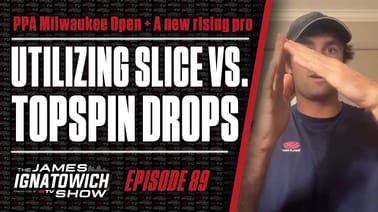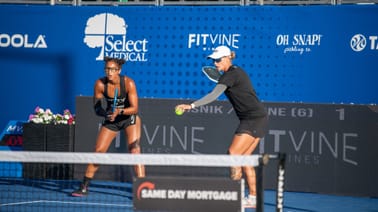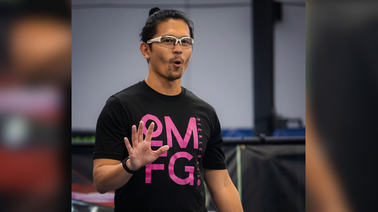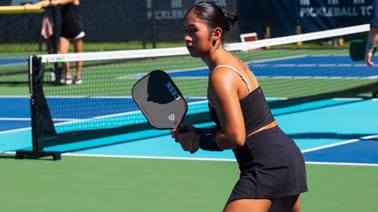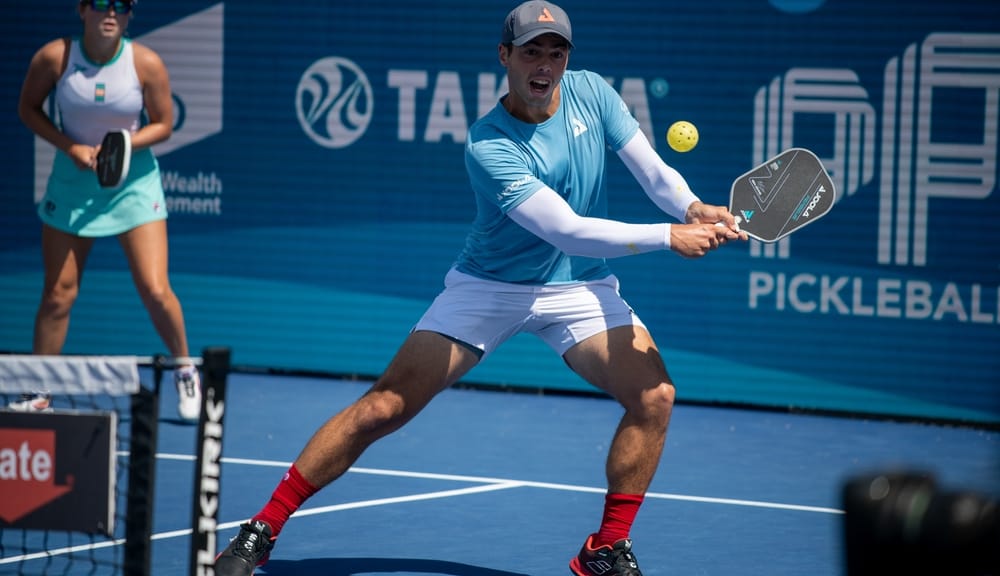
Anticipate, Position, Prep: How Paddle Preparation Improves Your Pickleball Game
To the untrained eye, it may seem like a pro or high-level player pulls the paddle back just before swinging it through the ball.
Take a look at this gif and pay attention to Ben Johns (bottom right corner):
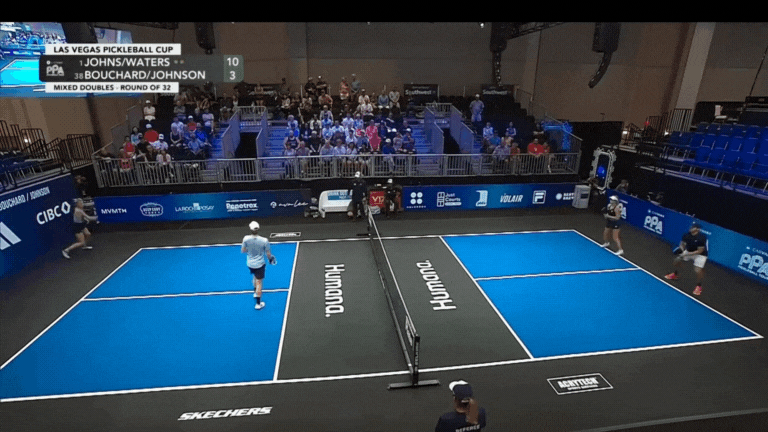
Do you notice something interesting about his "swing?"
When we slow down the video – or take some stills as we do below – you'll see that he's not waiting for the ball to arrive before pulling his paddle back. Instead, he's positioning his body and his paddle early once he realizes where the ball is headed.
Let's discuss what this means and why it's crucial for your game.
What prepping a paddle looks like
Before we dive into why early paddle preparation is so important, let’s show you how it looks.
Here’s a still from a match between Ben Johns and Anna Leigh Waters, the #1 Mixed Doubles team, against Genie Bouchard and Yates Johnson. The arrow on the left points to where the ball is after a return of serve, while the arrow on the right highlights Ben Johns with his paddle down, fully prepped to swing through the ball.
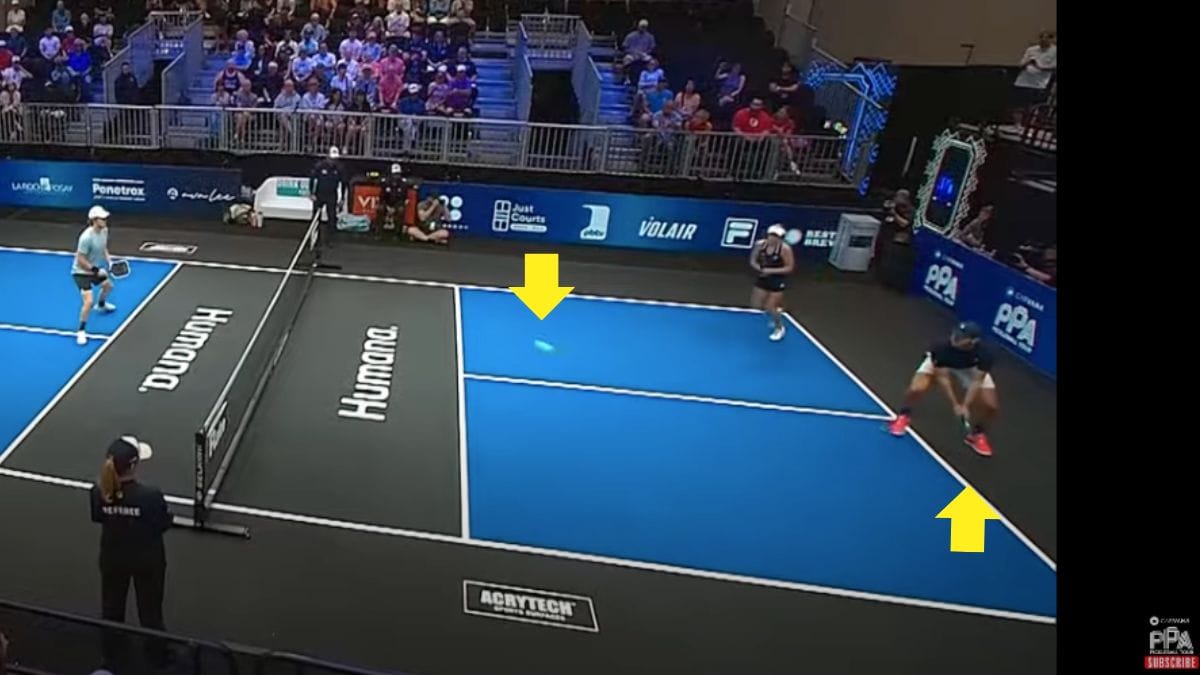
The ball has just crossed the kitchen line, and Ben is already set and ready to move forward with his paddle. In contrast, here’s a still of Genie Bouchard during a return of serve.
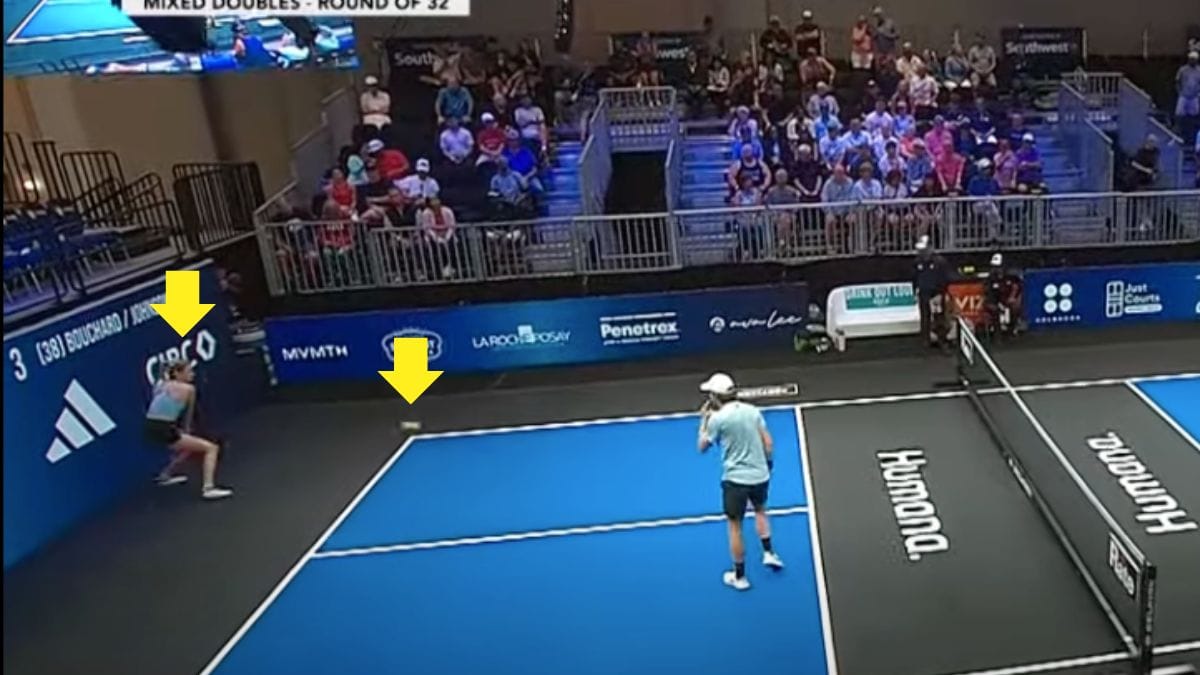
Notice how deep the ball is—near or on the baseline—by the time her paddle is down and she’s ready to hit.
Here’s another example with both players positioned at the kitchen line.
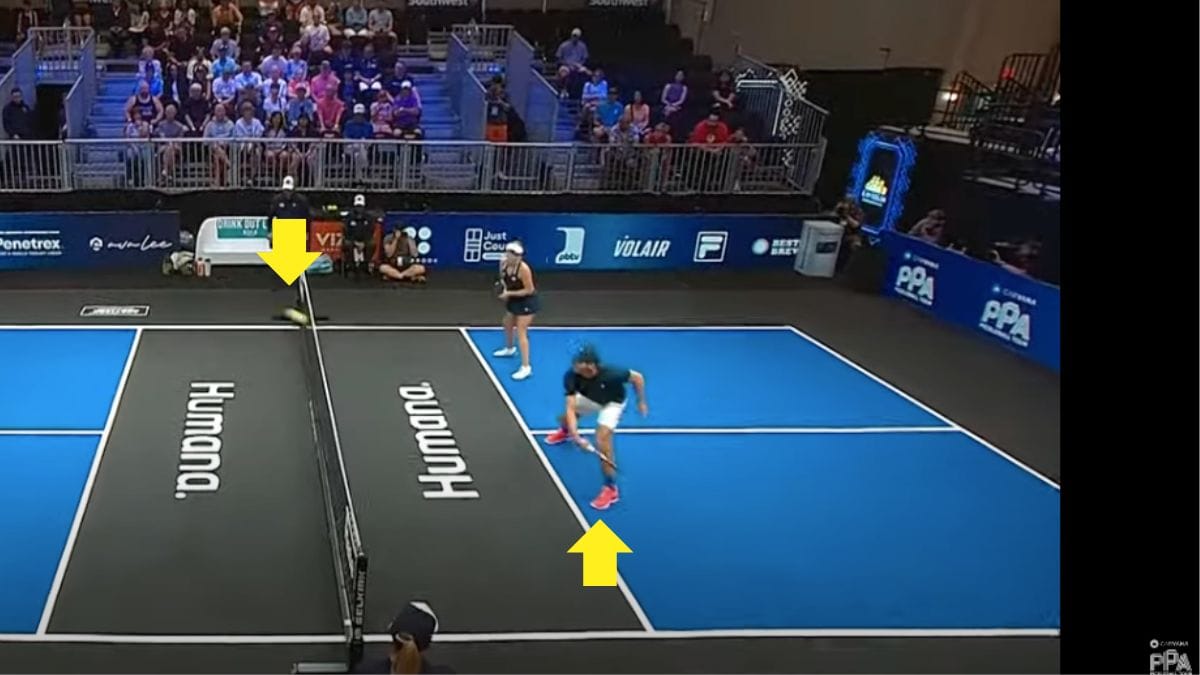
Once again, Ben has his paddle down well before the ball reaches him. It hasn’t even crossed the net yet, and he’s already prepped and ready to swing through.
Now, compare this to Genie (sorry, Genie!).
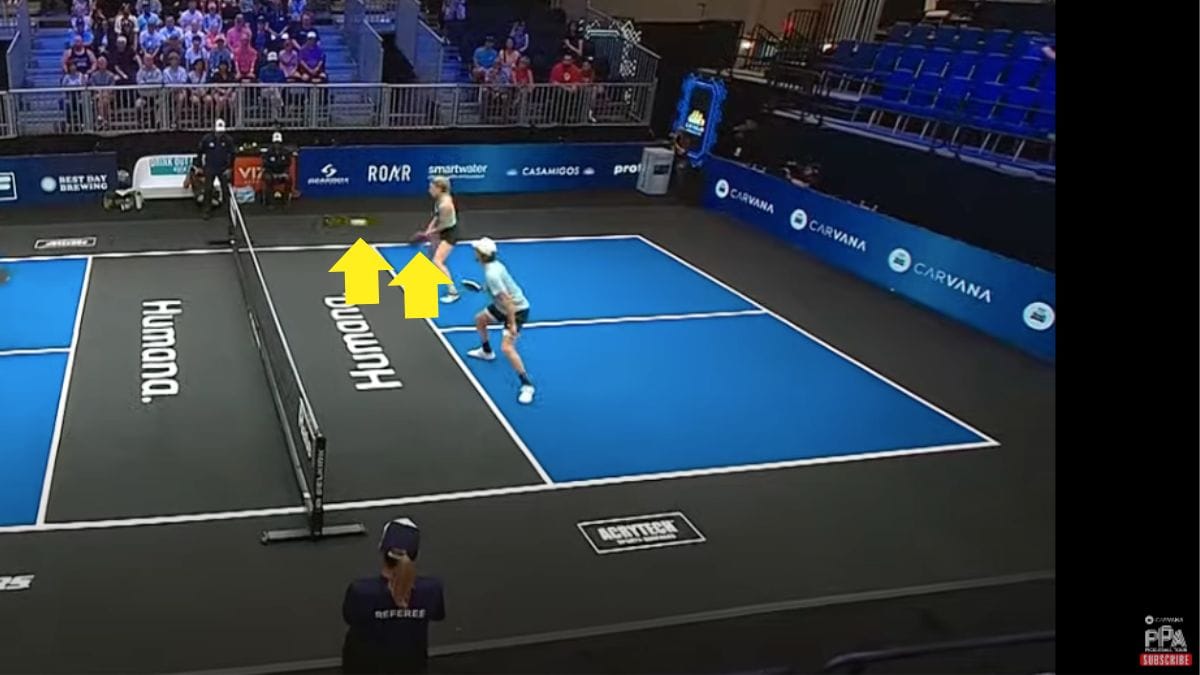
Notice how close the ball is to her body; she still hasn’t positioned her paddle for a clean strike.
The importance of prepping your paddle early
Why does this matter?
It’s no surprise that Ben’s shots resulted in solid and powerful contact while Genie’s didn’t. Early preparation helps you consistently hit the paddle's sweet spot and reduces the chance of mishits.
How to prep early
The key to early preparation comes down to three things:
- Anticipate where the ball is going as early as possible
- Position your body and set your feet as soon as your opponent hits the ball – then adjust your body position quickly
- Hold your paddle in the ideal striking position – this should be done by the time the ball crosses the net
Let's go into details about each.
Anticipate where the ball is headed
When our opponents hit the ball, our brain quickly calculates where it's headed—it's part of our natural athletic instincts. However, even when we know where the ball is going, many of us make the mistake of waiting to meet it at that spot.
The key is to get there as early as possible, so you're set and not moving when you take your shot. If you’ve played baseball, this will sound familiar. On defense, you're taught to move to where the ball is going, position your glove, and then make the catch.
Of course, there are times when you can't get there in time, but when you can, don’t be lazy—get into position early.
Position your body and set your feet
One of the most important things you can do in pickleball is to get into position and set your feet before making contact with the ball. When you’re in motion as you hit and your eyes bounce around, it’s much harder to maintain control and accuracy.
By arriving at the spot early, you give yourself time to establish a stable stance – especially on the backhand side – which leads to more consistent and powerful shots.
Think of it like laying a foundation—once your body is balanced and your feet are set, your swing becomes smoother and more controlled. This approach also helps prevent rushed or off-balance shots, giving you better placement and a higher chance of success.
Pause your swing
The final step is getting your paddle into the ideal striking position. But what does that mean?
Your paddle should be positioned in front of your body, not behind or to the side. In most cases, the tip of your paddle should be angled downward.
Here’s that screenshot of Ben demonstrating the correct form from earlier:

Pay attention not only to when his paddle is prepped but also to how it's prepped. Once the ball enters the strike zone (to borrow another baseball term), focus on pushing or extending your paddle into the ball rather than swinging it like a golf club or baseball bat.
By practicing early paddle preparation, you'll significantly reduce mishits and bring yourself closer to playing like the top players in the game.
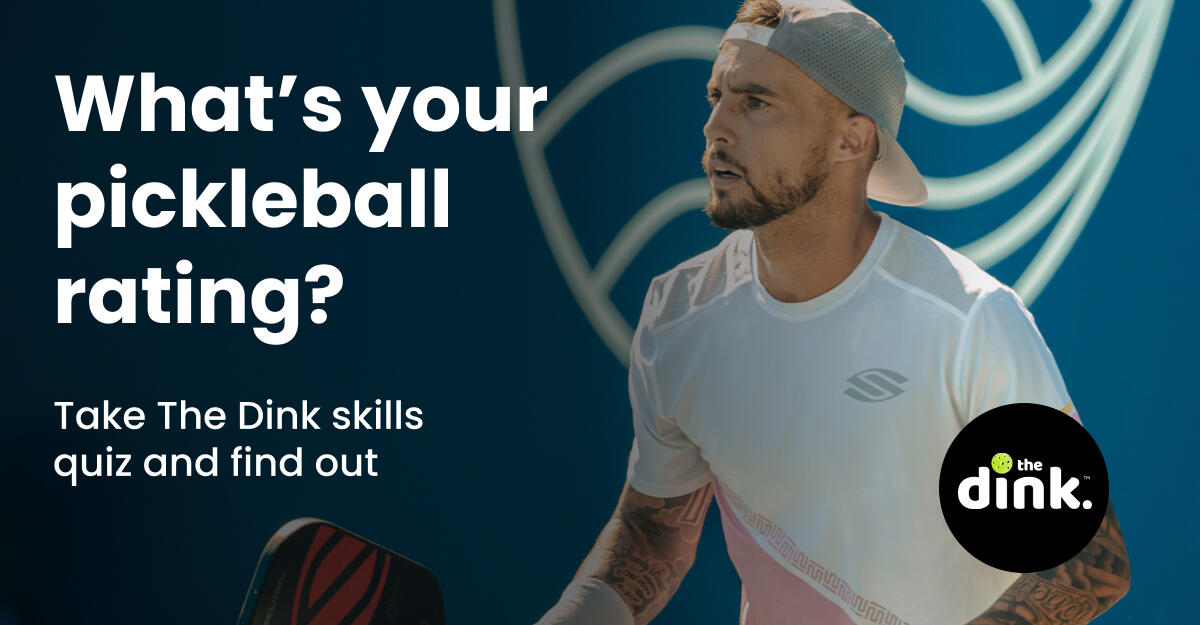

Love Pickleball? Join 100k+ readers for free weekly tips, news & gear deals.
Subscribe to The DinkGet 15% off pickleball gear at Midwest Raquet Sports



